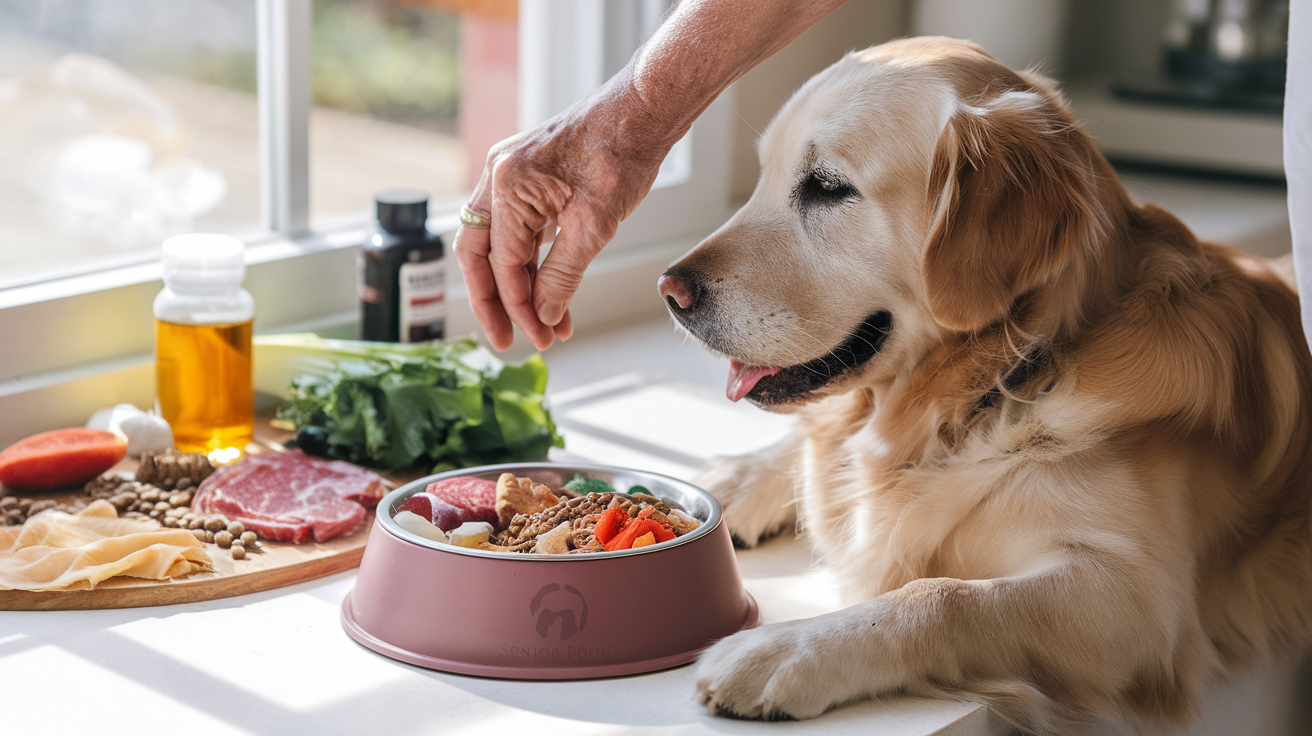There comes a time in every dog’s life when walks get slower, naps get longer, and stairs start to look a little steeper. If your dog is getting up there in years, you’ve probably noticed some of these changes already. And maybe you’ve asked yourself, “Is there more I can do to help them age well?” The answer is yes. And it starts in the bowl.
Feeding a senior dog isn’t just about keeping them full. It’s about helping them stay mobile, sharp, and happy—from the inside out. As dogs age, their bodies change. Their needs change. So their nutrition should, too.
What Changes in Senior Dogs?
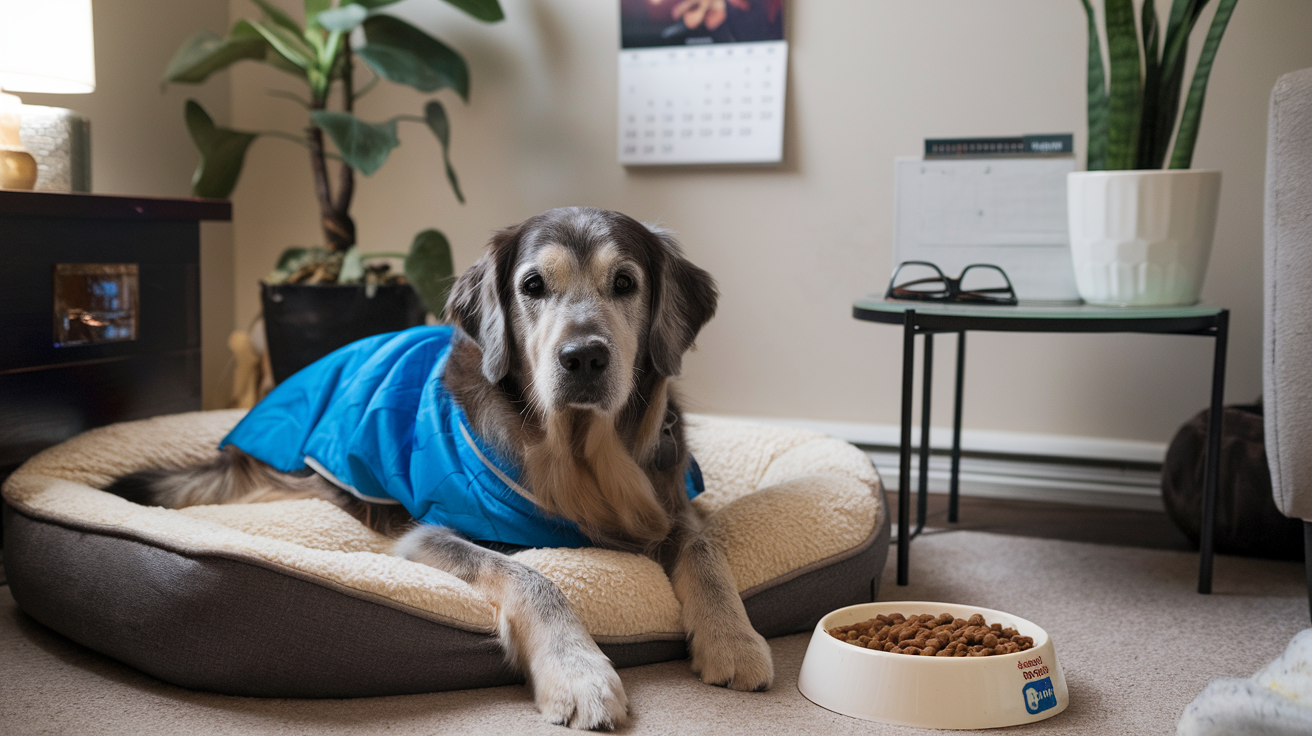
You know how we slow down a bit as we get older? Same goes for dogs.
- Their metabolism drops.
- Their muscle mass starts to fade.
- Their joints get a little stiff.
Digestion might get a little off. And their immune system? Not quite as strong as it used to be.
That’s a lot. But that’s also why nutrition matters so much. Because the right food doesn’t just fuel the body—it supports it, protects it, and keeps it running smoothly. [NRC, 2006; Veterinary Clinics of North America: Small Animal Practice, 2019].
I once thought my dog was indestructible. She could eat anything, always had energy and was very curious and would get into everything. I thought I was feeding her what she needed until one day, I noticed she had trouble climbing stairs. That’s when I started doing research on nutrition. I didn’t want a band-aid, I wanted to treat the root cause. After implementing some simple diet changes, she was back to her mischievous activities.
Everything Your Older Dog Needs in Their Bowl
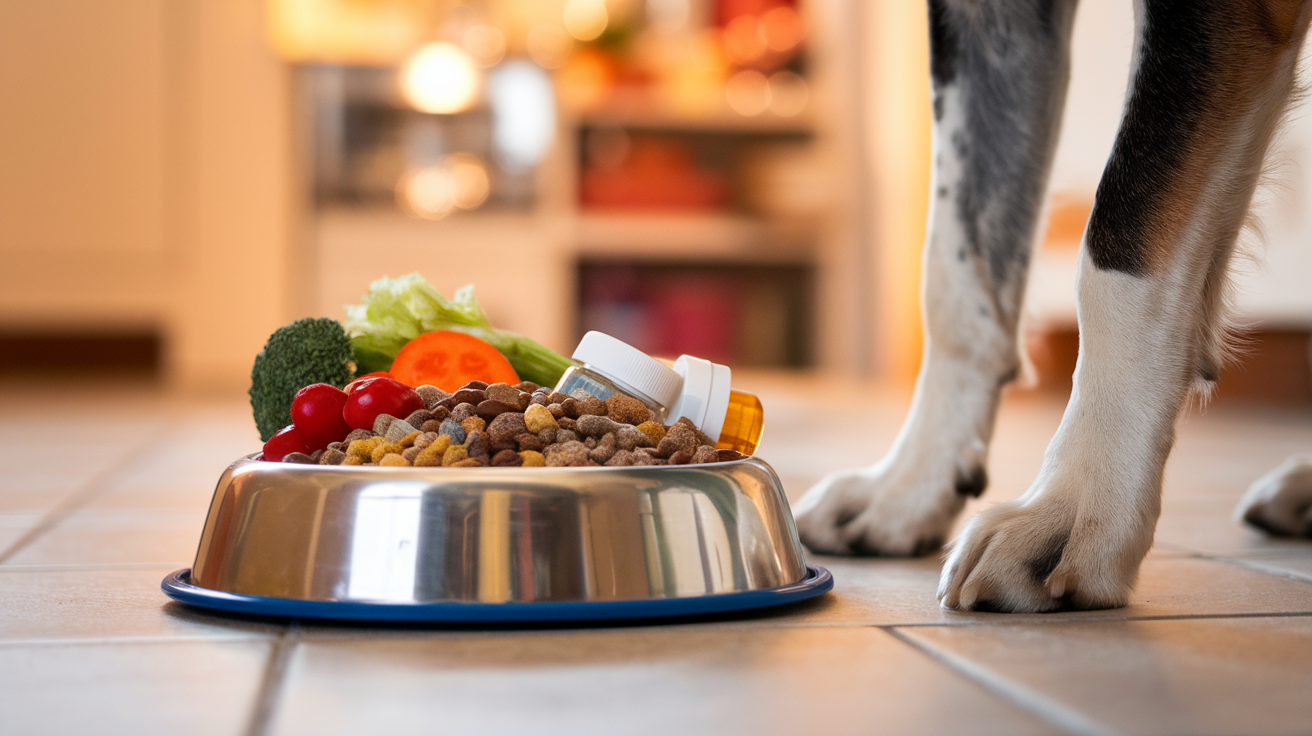
Let’s break it down. The Nutritional Power Players for Senior Dogs:
Quality Protein
-
- Muscle mass decreases with age, so your dog requires more high-quality protein — not less. But here’s the catch: It needs to be easy on the digestive tract, but also be mild for the kidneys.
- Good sources include chicken, turkey, fish and eggs. Seek out foods that have these listed as the first ingredient. [National Research Council (NRC) 2006; Case et al. 2021]
Moderate in Fat, Very High in Omega-3s
-
- Older dogs aren’t training for marathons, so they don’t require a huge number of calories. They still need fats to provide energy, maintain brain function, and keep skin healthy.
- EPA and DHA (often from fish oil) are my anti-inflammatory powerhouses. They also support joints, brain aging and heart health, too. [2, 3] The three-legged stool model of veterinary nutrition.
Antioxidants
-
- Antioxidants battle oxidative stress—which translates loosely to: They help your dog age slower, and stay healthy longer.
- You want vitamins E and C, selenium and sometimes CoQ10. Turmeric and blueberries? Also good. [Linus Pauling Institute, 2019; Functional Veterinary Nutrition, 2022]
Joint Support Nutrients
-
- Glucosamine. Chondroitin. MSM. Collagen peptides. These are your dog’s best friends when stairs get to difficult.
- Others add these ingredients directly into the product. Or you might do separate supplementation. [Johnson et al., 2016; Vet Clinics Orthopedics Review, 2020]
Gut Health Boosters
-
- The digestion process will also slow with older, less active dogs. It can mean constipation, gas, nutrient loss.
- Fiber is beneficial — particularly soluble fiber. And probiotics, prebiotics or digestive enzymes. [WSAVA Nutrition Toolkit; Companion Animal Nutrition, 2022]
Brain and Nerve Support
-
- If your dog appears confused or forgetful, you’re not making it up. Canine cognitive dysfunction is real — and nutrition can help.
- Among these, MCT oil, B vitamins, L-carnitine, and phosphatidylserine have shown promise for brain aging. Landsberg et al., 2012; Pan et al., 2018
The Science Behind Dog Nutrition

What Is Metabolomics (and Why Should You Care)?
Metabolomics is about studying small chemical changes in your dog’s body. It can detect early signs of issues like inflammation, stress, or nutrient shortages before symptoms appear. Think of it as a detailed health report showing problems that aren’t visible yet. Vets use metabolomic testing to tailor diets specifically for pets. This enables them to identify issues early and address them with appropriate food and supplements. [Smith & Johnson, 2021; Nutrigenomics & Metabolomics in Animal Health, 2020] You might even have a personal story about learning something unexpected from a metabolomics test or a wellness panel at the vet’s office.
Orthomolecular Nutrition for Seniors
Here’s the big idea: Your dog doesn’t just need enough nutrients to avoid a deficiency. They need optimal levels to feel their best.
That’s the orthomolecular approach. Higher levels of things like CoQ10, B-complex vitamins, or antioxidants to support aging organs, nerves, and metabolism.
But be careful. Too much of the wrong thing can cause problems. It’s always best to work with a vet or pet nutritionist before adding heavy-duty supplements. [Orthomolecular Vet Studies, 2020; Linus Pauling Institute, 2019]
Functional Additions That Make a Difference
Want to go beyond the basics? These functional ingredients have real benefits for older dogs:
Adaptogens
These are herbs that help the body handle stress. Reishi mushroom. Ashwagandha. Astragalus.
Used in moderation, they may support mood, energy, and immune health. [Dodds, 2021]
Medicinal Mushrooms
Turkey tail, maitake, shiitake. These can support immunity and sometimes even help dogs facing cancer or chronic conditions. [Veterinary Herbal Medicine, 2007]
Herbal Detox Support
Milk thistle, dandelion root, and nettle are often used to support liver and kidney health. But they aren’t for every dog, especially those with advanced organ disease.
Talk to your vet before using herbs regularly. [Veterinary Botanical Medicine, 2001]
Golden Paste (Turmeric Blends)
Turmeric + black pepper + healthy fat = a natural anti-inflammatory combo. It’s gentle, affordable, and may help dogs with arthritis or stiffness. [Vet Nutraceuticals Journal, 2021]
Home-Cooked or Commercial?
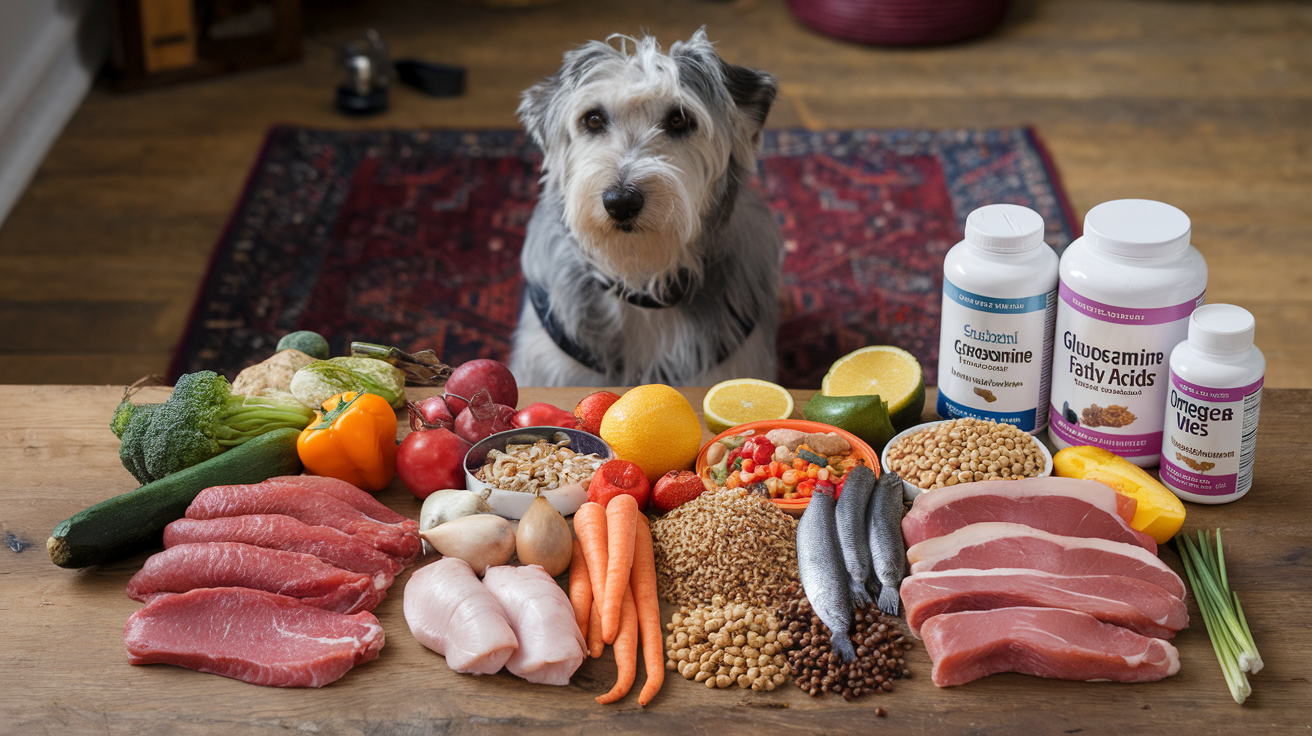
It depends.
Home-cooked diets give you control, but only if they’re properly balanced. Too little calcium? Not enough zinc? That can backfire fast.
Commercial diets made for senior dogs are usually safer, but read the label. Look for recognizable proteins, low phosphorus (for kidney support), and added joint or brain nutrients.
Choosing the Right Senior Dog Food
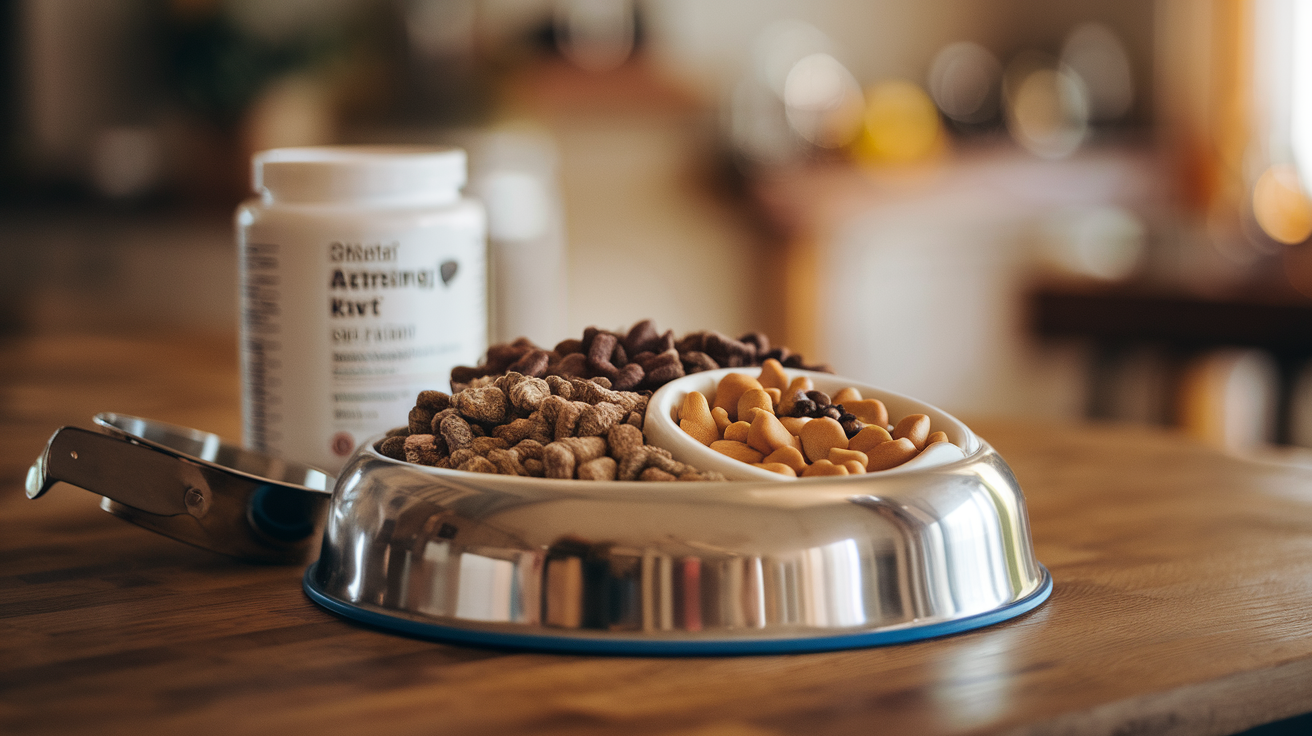
Home-Cooked or Commercial?
It depends.
Home-cooked diets give you control, but only if they’re properly balanced. Too little calcium? Not enough zinc? That can backfire fast.
Commercial diets made for senior dogs are usually safer, but read the label. Look for recognizable proteins, low phosphorus (for kidney support), and added joint or brain nutrients.
Some people decide to prepare homemade meals or use raw food for their pets. If you are considering this option: – It’s important to speak with a veterinary nutritionist to ensure your pet receives balanced nutrition. – Remember that raw food can come with safety risks. – You might also consider a semi-homemade approach. This means adding fresh ingredients to store-bought senior dog food. After we discussed how to select suitable food for senior dogs, let’s focus on the best feeding practices to make sure your older pet gets the nutrition they need.
Commercial Dog Food – Reading and interpreting pet food labels
Understanding pet food labels is crucial when choosing the right nutrition for your senior dog. Here’s a breakdown of key elements to look for:
- Ingredient list: Look for high-quality protein sources as the first ingredient
- Guaranteed analysis: Check for appropriate protein, fat, and fiber levels
- AAFCO statement: Ensure the food meets nutritional standards for senior dogs
- Calorie content: Consider your dog’s activity level and weight management needs
| Label Element | What to Look For |
|---|---|
| Protein | 18-25% for seniors |
| Fat | 8-12% for seniors |
| Fiber | 3-5% for digestive health |
Wet versus dry food considerations
When deciding whether to feed your senior dog wet or dry food, here are a few things to consider:
- Moisture content: Wet food provides extra hydration
- Dental health : Dry food can support teeth
- Palatability: Picky eaters may also prefer wet food
- Easy to measure and store: Potential for portion control
Prescription diets for certain health conditions
For older dogs with health problems, prescription diets may be helpful:
- Joint health: Foods containing glucosamine and chondroitin
- Heart health: Opt for low-sodium
- Phosphorus — reduced phosphorus, kidney support. Protein — reduce protein (if kidney support)
- Digestive problems: Easy-to-digest ingredients and probiotics
Homemade and raw diet options
Some pet owners choose to feed homemade or raw diets. If considering this route:
- Feed raw diets with caution focused on safety food risks
- Think semi-homemade, you add the fresh ingredients to a commercial senior dog food
With that said, now that we’ve answered how to choose the best senior dog food, let’s discuss the best feeding practices to maintain the highest level of nutrition for your aged friend.
Feeding Practices for Senior Dogs
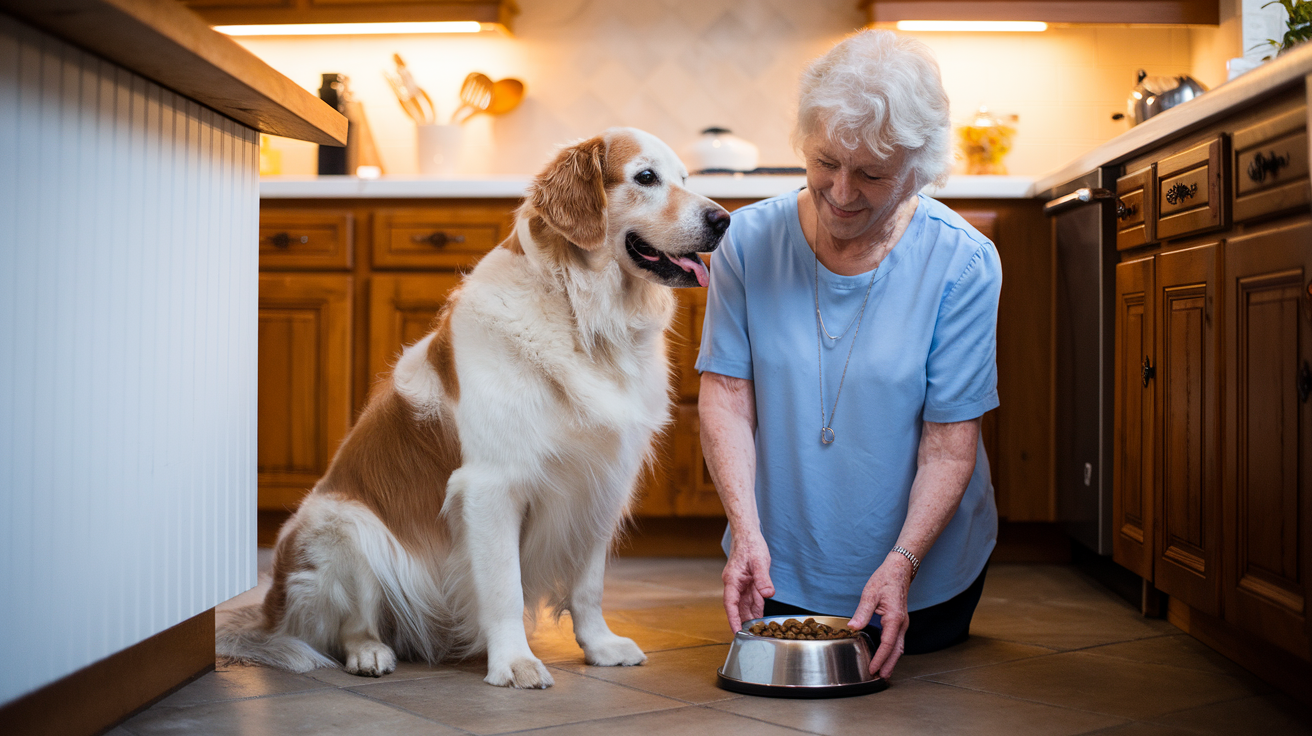
Meal frequency and portion control
As dogs age, their metabolism slows down, making portion control crucial. Divide their daily food intake into 2-3 smaller meals to aid digestion and maintain energy levels. Use this table as a guide:
| Dog Size | Meals per Day | Portion Size |
|---|---|---|
| Small | 3 | 1/4 – 1/3 cup |
| Medium | 2-3 | 1/2 – 3/4 cup |
| Large | 2 | 1 – 1.5 cups |
Food Texture and Taste
Older dogs commonly have dental heath issues or are just not interested in eating much. To liven up their meals: — Soften dry dog food with warm water or low-sodium broth. — Mix in a little bit of wet food. — Provide a variety of flavors and textures to keep their interest.
Hydration: Why Your Dog Should Drink Plenty of Water
Water is essential for aging dogs. Here’s how to keep them hydrated: — Make sure they always have fresh, clean drinking water available. — A water fountain may encourage drinking. — Add some water to their food. — Sometimes, treat them to ice cubes.
Treats and Supplements: Keep It Balanced
Although treats can be a great addition to your senior dog’s diet, the key is balance. Keep snacks low in calories and high in nutrients. Here’s how to handle treats in the right way: – Treats are only about 10% of their total daily caloric intake. – Select supplements for older dogs, after consulting your vet. – Offer functional treats to support dental care or joints. We set up nutrition plans, developed feeding strategies, and now we can begin to explore how to monitor your senior dog for nutritional health so they thrive on their new diet.
Monitoring Your Senior Dog’s Nutritional Health
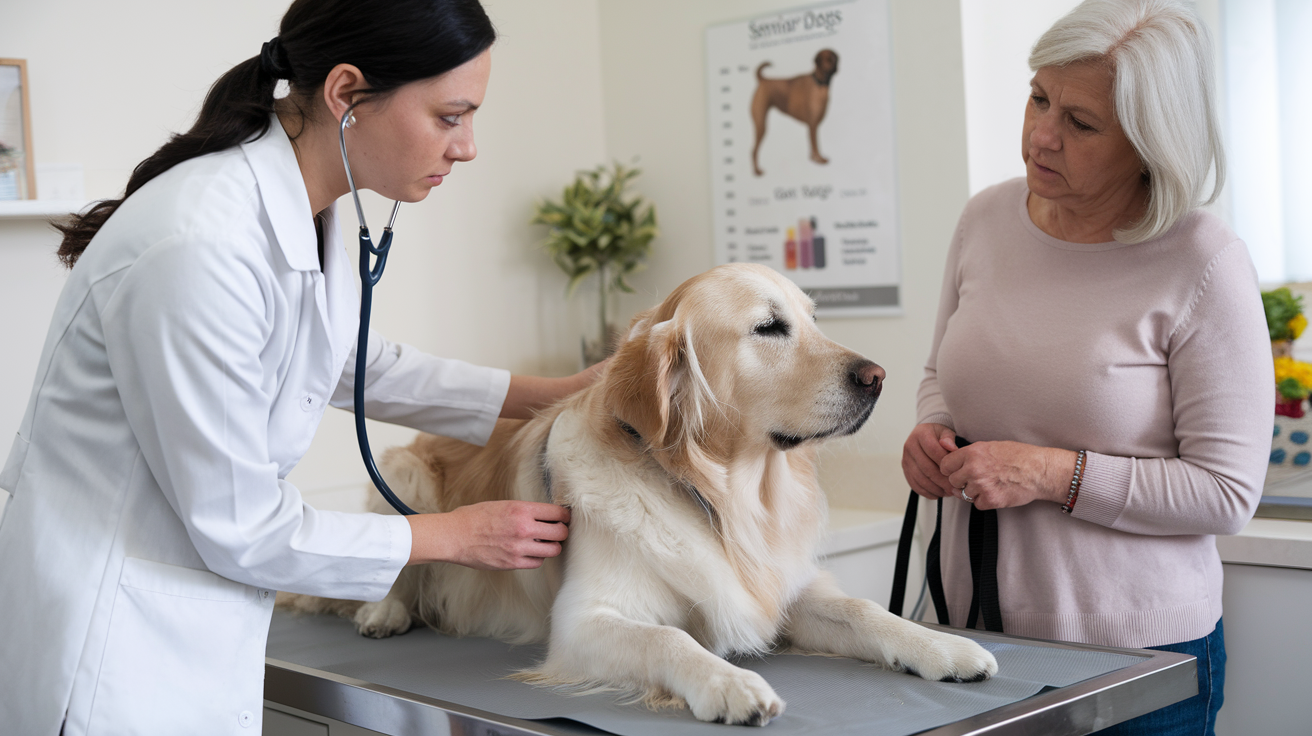
Regular veterinary check-ups
Regular veterinary check-ups are crucial for monitoring your senior dog’s nutritional health. These visits allow for:
- Early detection of age-related health issues
- Adjustments to diet and nutrition plans
- Monitoring of weight and body condition
- Blood work to assess organ function and nutrient levels
| Check-up Frequency | Recommended Actions |
|---|---|
| Every 6 months | Physical exam, weight check, dental assessment |
| Annually | Comprehensive blood work, urinalysis |
| As needed | Specialized tests based on health concerns |
Body Condition Scoring
Checking your older dog’s body condition can tell you
- if they are eating properly: Use a scale from 1 to 9, with 5 being ideal
- Look and feel for fat deposits
- Pay attention to muscle mass, especially on the spine and hips
Monitoring Energy Levels and Activity
To know if your dog is eating well, watch their energy and activity:
- See how much exercise they can do each day
- Watch for changes in how playful they are
- Keep an eye on their sleep patterns and restfulness
- Notice how easily they move around
Adjusting Diet Based on Health Changes
As dogs age, their diet might need adjustments for health reasons:
- Change protein levels to support kidney health
- Modify fat content to help manage weight
- Add more fiber for digestive health Include supplements if your vet suggests them
Using these methods helps you meet your dog’s nutritional needs as they grow older. We’ll next discuss how to fit these into your everyday routine.
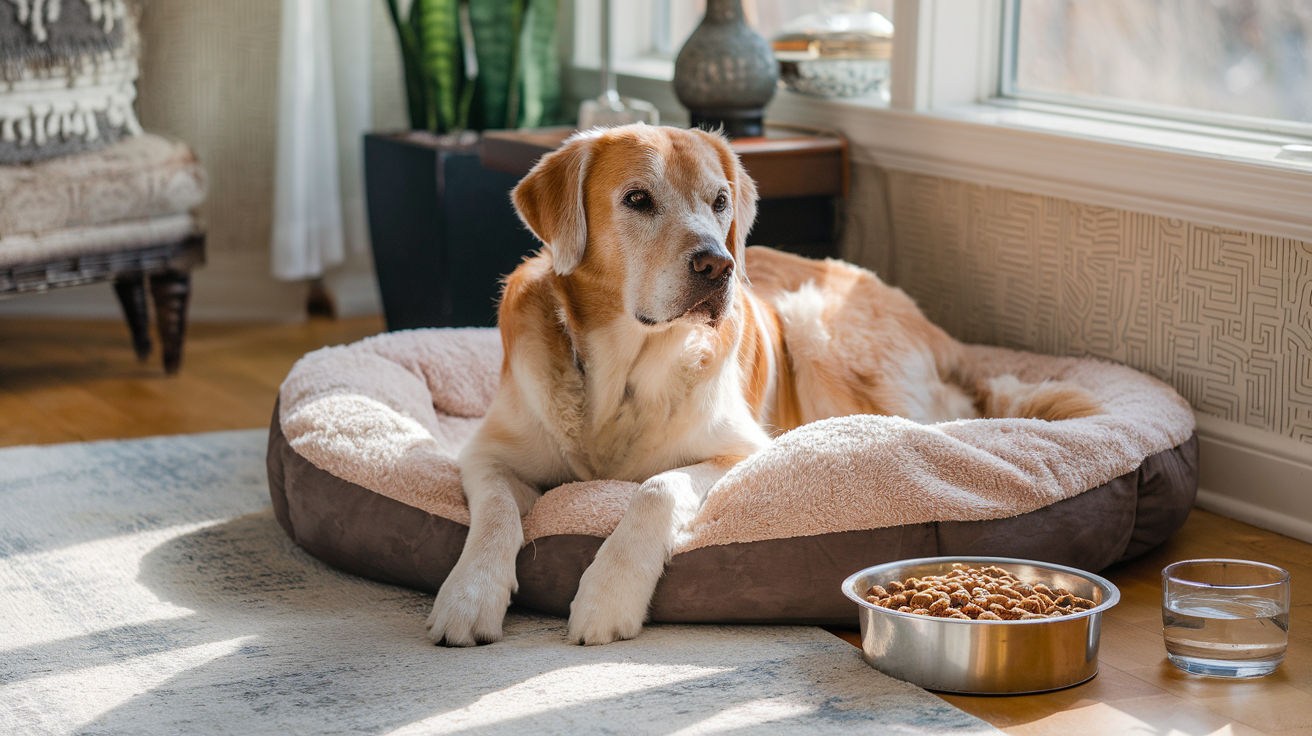
Feeding a senior dog is part science, part intuition, and all love. You don’t have to do it perfectly. But the more you understand their changing needs, the better you can support them.
- From muscle to memory.
- From joints to digestion.
- From aging cells to wagging tails.
It all starts with what you put in the bowl.
References
References
- AAFCO Official Publication (2023) – aafco.org
- National Research Council (NRC). (2006). Nutrient Requirements of Dogs and Cats – nap.edu
- Smith & Johnson (2021). Vet Metabolomics Review
- Functional Veterinary Nutrition (2022)
- Canine and Feline Nutrition, 3rd ed. (Case et al., 2021)
- Landsberg et al. (2012). Canine Cognitive Dysfunction Syndrome Review
- Pan et al. (2018). Neuroprotective Diets in Dogs
- Orthomolecular Vet Studies (2020)
- Linus Pauling Institute (2019) – linuspauling.org
- Johnson et al. (2016). Canine Orthopedic Journal
- Veterinary Clinics of North America: Small Animal Practice (2019)
- Veterinary Herbal Medicine (Wynn & Fougere, 2007)
- Veterinary Botanical Medicine (Tilford & Wulff, 2001)
- Vet Nutraceuticals Journal (2021)
- WSAVA Global Nutrition Committee Toolkit – wsava.org
- Dodds, J. (2021). Integrative Vet Care
Further Reading
American Kennel Club (AKC): The AKC provides a wealth of information on various aspects of dog care, including senior dog nutrition. Here are a couple of relevant links:
- Senior Dog Nutrition and Supplement Tips
- Best Dog Food for Senior Dogs: What to Know When Choosing a Food
Purina Institute: This website offers scientific information on pet nutrition, including specific advice for senior dogs.
VCA Animal Hospitals: VCA provides veterinary information for pet owners, including detailed articles on senior dog nutrition.
WebMD: This site has pet health sections that discuss the dietary needs of older dogs.

